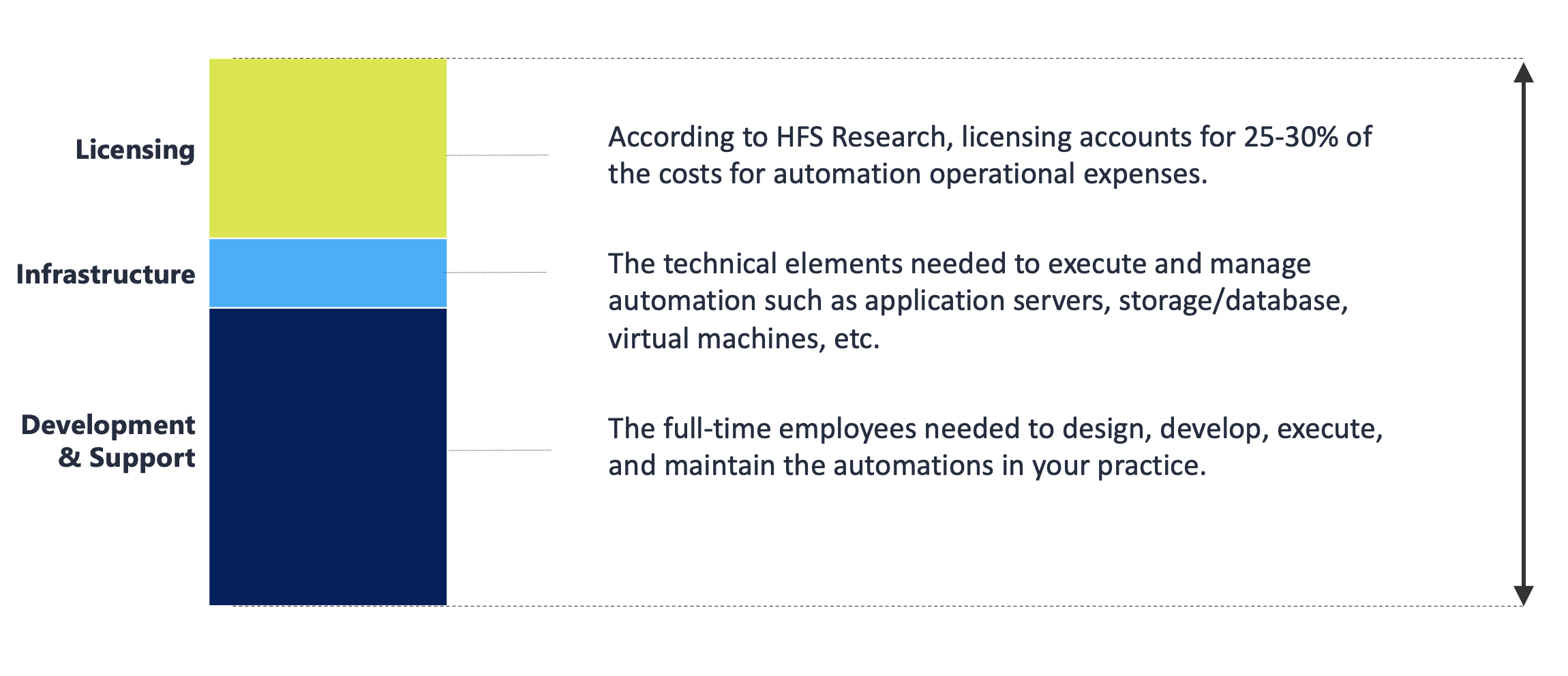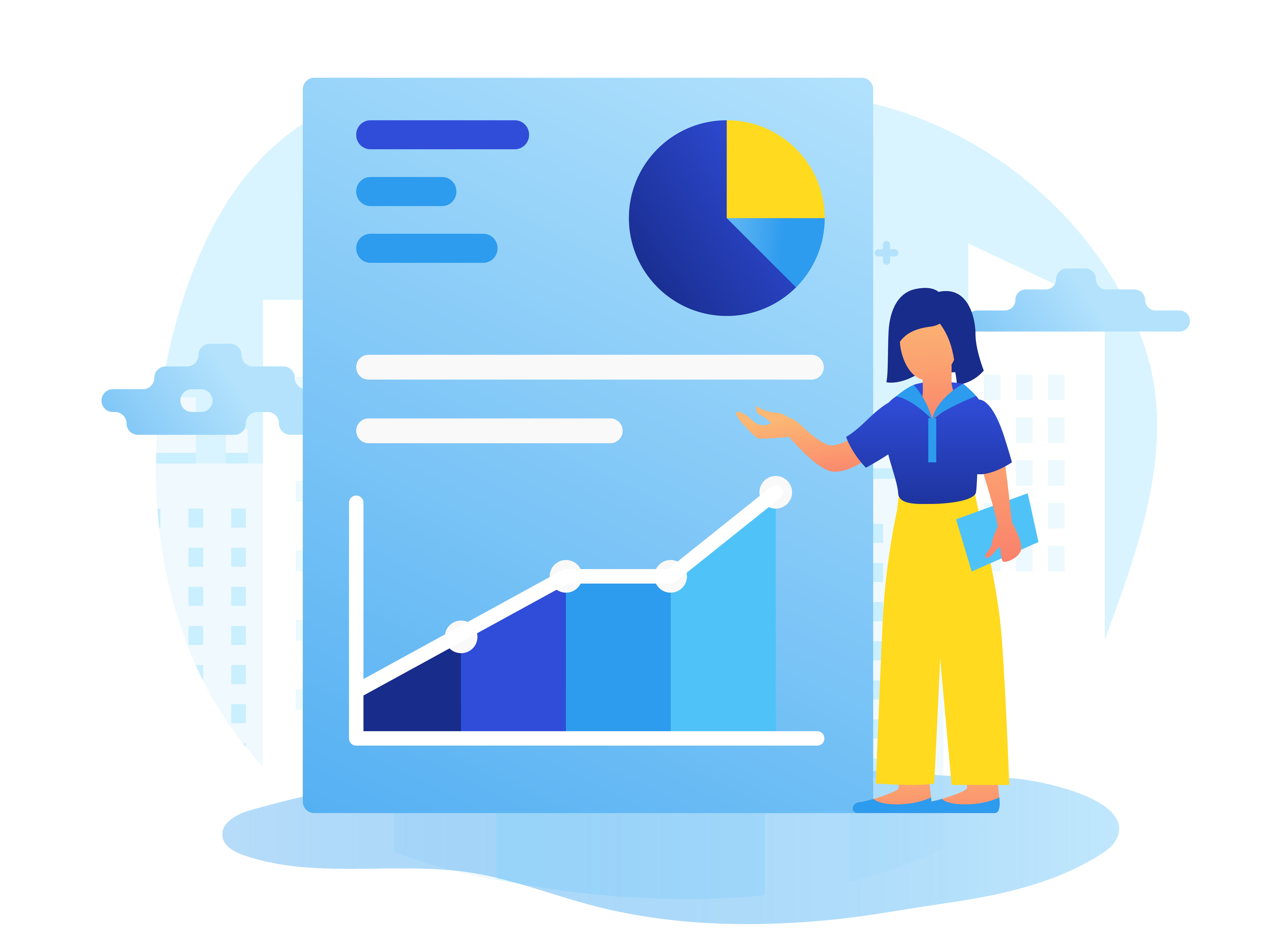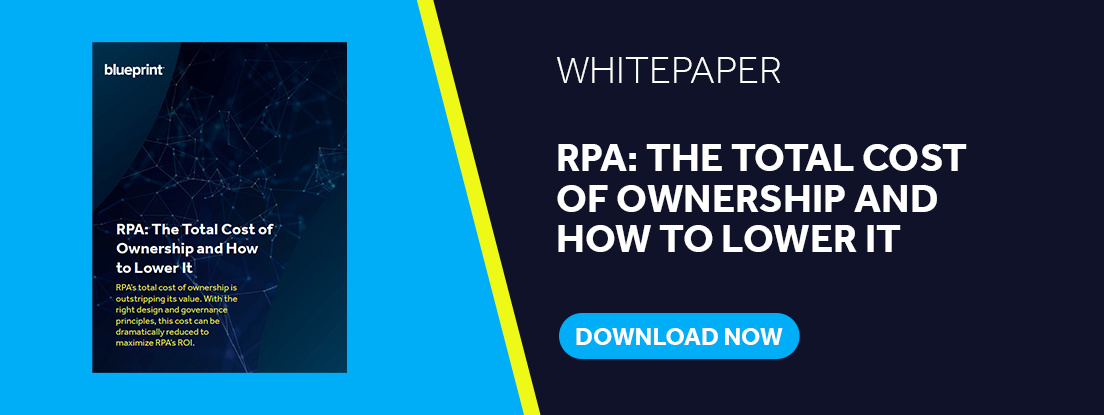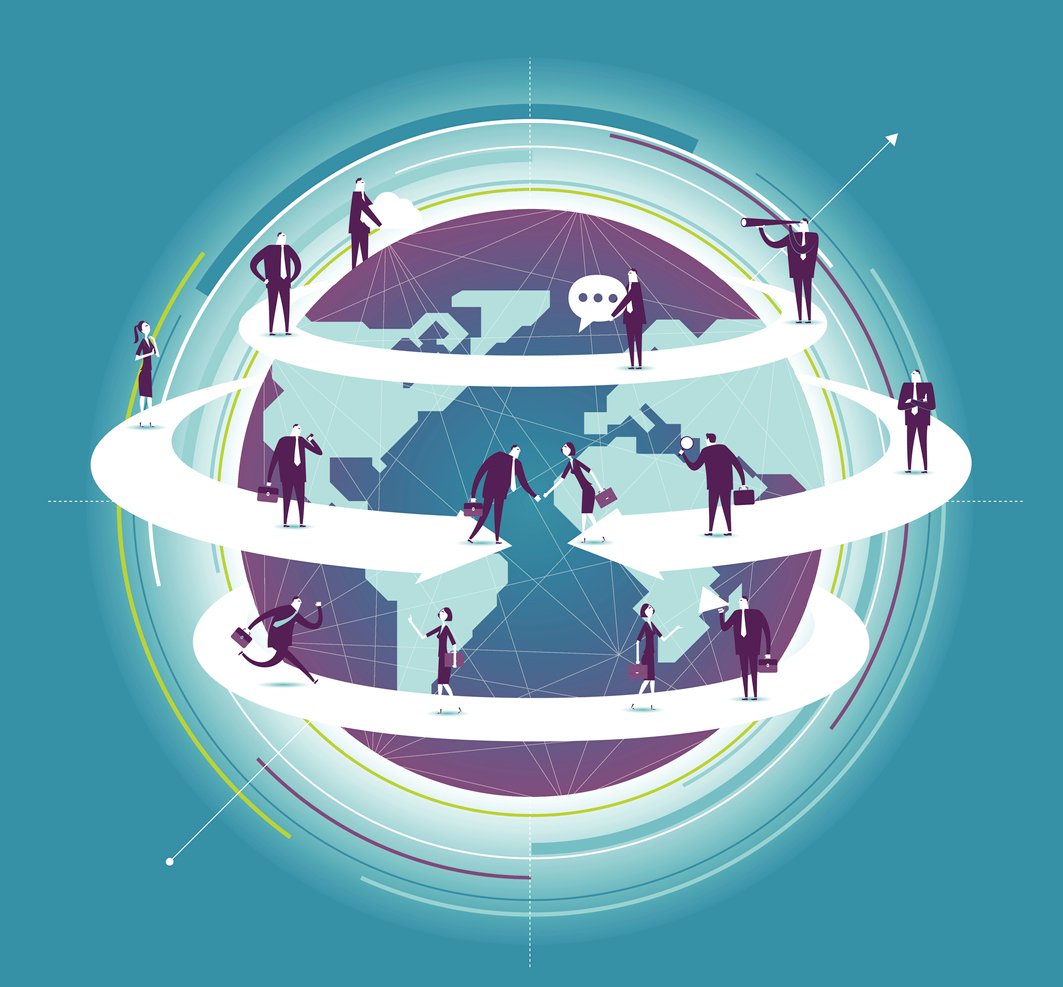The Total Cost of Ownership Components to Consider for RPA Migrations
Building a compelling business case for migrating your existing RPA estate to a next-generation RPA platform can be a challenging exercise. The need to clearly indicate explicit cost reduction and an increase in business value is paramount to acquiring executive sponsorship as you look to move to a more beneficial intelligent automation platform like Microsoft Power Automate.
To help you in that regard, these are the components of automation’s total cost of ownership (TCO) that need to be included and compared in any RPA migration business case.

What is the Total Cost of Ownership for Automation?
Total cost of ownership for automation refers to the financial operational expense or investment to manage and maintain automation in any organization. At a high level, automation’s TCO can be broken down into the following three categories:
- Licensing costs
- Infrastructure costs
- Development & Support
Licensing Costs
According to HFS Research, licensing accounts for 25-30% of the costs for automation operational expenses. However, comparing licensing costs across RPA vendors can be a challenging exercise because of the variability in pricing. For example, many comparisons are based on evaluating the price per automation in production, but an automation is not exactly a defined standard across RPA tools: the definition of an automation or bot in UiPath is different than a bot or automation in Blue Prism or Automation Anywhere.
Moreover, licensing models vary across vendors and usually include some form of input-based components such as automations in production, lines of code, etc. Others have output-based pricing structures like number of transactions processed, or even a combination of the two.
In that regard, Microsoft Power Automate’s pricing model is a departure from the traditional legacy RPA structures, making it very digestible and easy to understand, simplifying cost-benefit analyses.
Even though apple-to-apple comparisons are challenging, in the interest of simplicity, licensing can be reduced to its most basic form. In that sense, licensing includes both the users that will need to access the RPA tool and environment, in addition to the utilization costs of running automated processes because automations require licenses as well. Therefore, the investment needed from a licensing standpoint can be broken down into the following components:
- # of RPA users (both RPA developers and operations users)
- # of unattended automations in production
- # of attended automations in production
- Other licensing costs – Depending on the legacy RPA tool you use, there could be several additional licensing costs for various services such as cross-functional collaboration tools. Blue Prism, for example, offers a collaboration platform called Interact that also incurs a fee and can be grouped in the licensing category.
Infrastructure
Licensing only makes up part of the equation for automation’s total cost of ownership. While accounting for a smaller share of RPA’s TCO, infrastructure is a category that also needs to be considered in any business case for RPA migration.
RPA infrastructure refers to the technical elements needed to execute and manage automation. Infrastructure elements that should be clearly defined and measured in any analysis or business case for TCO migration include:
- Application servers needed for automation development, user acceptance testing (UAT), and production
- Data gateway servers for things such as analytics to track and monitor your automation practice
- Storage/database elements like SQL databases or file servers
- Virtual machines required to run your automation practice
- Hosting costs which will vary depending on whether you use on-premises or cloud setup
- Additional service fees from any consultancy, outsourcing organization, or the RPA vendor itself like premium support services.
Development and Support
The biggest components of automation’s total cost of ownership are the resources needed to develop, maintain, and support your automation practice. Regarding a business case for RPA migration, this is a decisive element because the more complex the RPA tool you use, the higher this cost will be and vice versa.
To account for your development and support costs as part of your business case for RPA migration, this would simply include all the full-time employees needed to design, develop, execute, and maintain the automations in your practice.
For a more in-depth breakdown of automation’s total cost of ownership, download the whitepaper – RPA: The Total Cost of Ownership and How to Lower It.
Share this
Recent Stories

The 5 Differences Between Legacy RPA Tools and Next-Generation Intelligent Automation Platforms

Microsoft Unveils Power Automate Premium Licenses. What Does That Mean for You?




